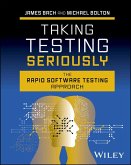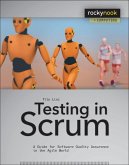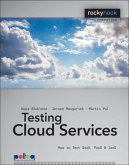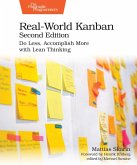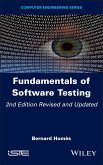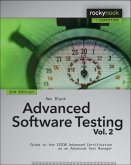Elevate your software testing approach with a methodology from industry leaders who dedicated their careers to studying, practicing, and teaching the craft of testing.
Dive into the world of expert software testing with Taking Testing Seriously: The Rapid Software Testing Approach. This book arms software professionals with the knowledge required to master the Rapid Software Testing (RST) methodology. Written by two co-creators of the RST approach and supplemented by material from respected testers who offer valuable insights, it is an essential read for anyone seeking excellence in the craft of testing.
Taking Testing Seriously offers a rich exploration of the RST methodology through insightful interviews, expert discussions, practical case studies, and real-world examples. It thoroughly covers key topics such as the psychology of testing, the science behind it, the fundamental processes and heuristics of test design, and much more. This book provides concrete strategies for addressing common software testing challenges and integrating new solutions with existing systems.
You will:
Focusing on the mindset and skillset of excellent testing, Taking Testing Seriously is a must-have resource for software engineers and technical leaders eager to improve their testing proficiency. Whether you are looking to advance your career or simply want to ensure your next project meets the highest standards of quality, this book provides the tools you need. Order your copy today and start transforming the way you and your team approach software testing.
Dive into the world of expert software testing with Taking Testing Seriously: The Rapid Software Testing Approach. This book arms software professionals with the knowledge required to master the Rapid Software Testing (RST) methodology. Written by two co-creators of the RST approach and supplemented by material from respected testers who offer valuable insights, it is an essential read for anyone seeking excellence in the craft of testing.
Taking Testing Seriously offers a rich exploration of the RST methodology through insightful interviews, expert discussions, practical case studies, and real-world examples. It thoroughly covers key topics such as the psychology of testing, the science behind it, the fundamental processes and heuristics of test design, and much more. This book provides concrete strategies for addressing common software testing challenges and integrating new solutions with existing systems.
You will:
- Gain insights from experienced software testers through in-depth interviews and expert advice
- Learn how to the skills of testing are needed more than ever in an AI-powered IT industry
- Discover strategies to leverage the latest automation technologies to refine and expedite your testing processes
- Escape from the echo chamber of "best practices" and learn to think critically about testing
Focusing on the mindset and skillset of excellent testing, Taking Testing Seriously is a must-have resource for software engineers and technical leaders eager to improve their testing proficiency. Whether you are looking to advance your career or simply want to ensure your next project meets the highest standards of quality, this book provides the tools you need. Order your copy today and start transforming the way you and your team approach software testing.
Dieser Download kann aus rechtlichen Gründen nur mit Rechnungsadresse in D ausgeliefert werden.



